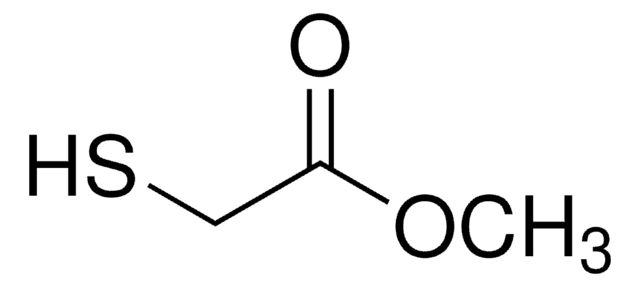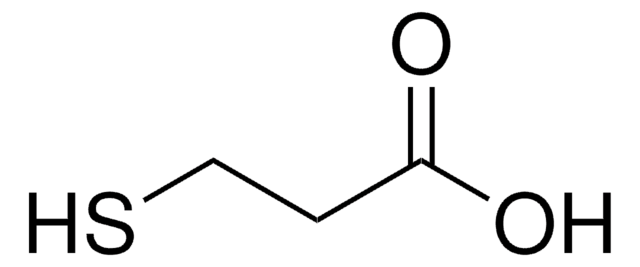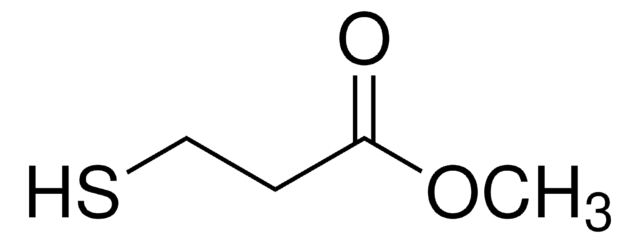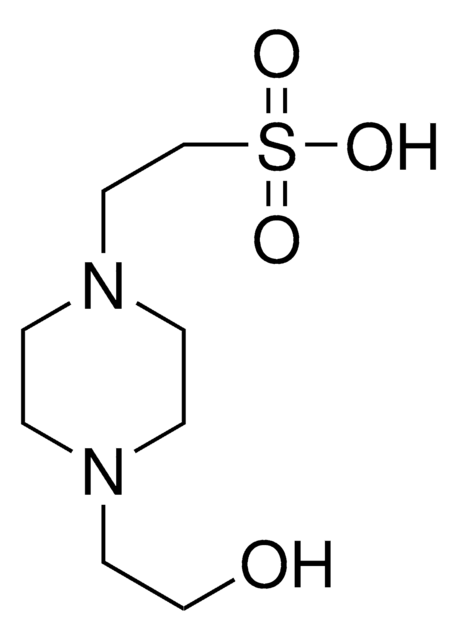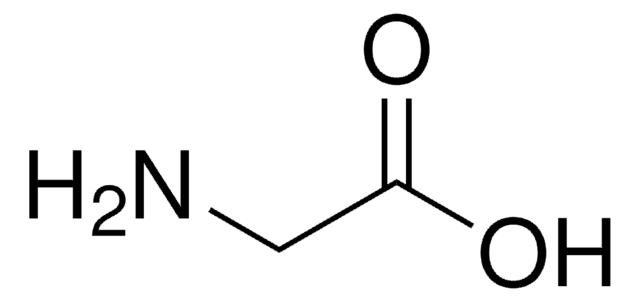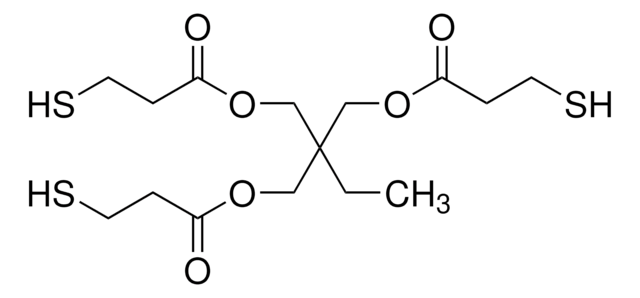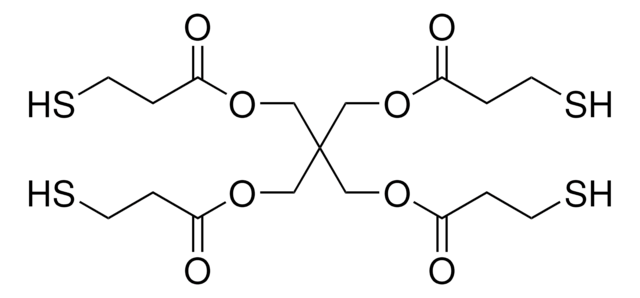88670
2-Ethylhexyl thioglycolate
≥95.0% (GC)
Synonym(s):
2-EHTG
About This Item
Recommended Products
Quality Level
assay
≥95.0% (GC)
form
liquid
refractive index
n20/D 1.461
bp
255-260 °C (lit.)
density
0.972 g/mL at 20 °C (lit.)
SMILES string
CCCCC(CC)COC(=O)CS
InChI
1S/C10H20O2S/c1-3-5-6-9(4-2)7-12-10(11)8-13/h9,13H,3-8H2,1-2H3
InChI key
OWHSTLLOZWTNTQ-UHFFFAOYSA-N
Looking for similar products? Visit Product Comparison Guide
Related Categories
Application
- In the selective extraction of indium(III) and gallium(III).
- As a reagent in the synthesis of conjugated polymers based on thienoquinoidal building block.
signalword
Warning
hcodes
Hazard Classifications
Acute Tox. 4 Oral - Aquatic Acute 1 - Aquatic Chronic 1 - Skin Sens. 1
wgk_germany
WGK 3
ppe
Eyeshields, Faceshields, Gloves, type ABEK (EN14387) respirator filter
Certificates of Analysis (COA)
Search for Certificates of Analysis (COA) by entering the products Lot/Batch Number. Lot and Batch Numbers can be found on a product’s label following the words ‘Lot’ or ‘Batch’.
Already Own This Product?
Find documentation for the products that you have recently purchased in the Document Library.
Customers Also Viewed
Our team of scientists has experience in all areas of research including Life Science, Material Science, Chemical Synthesis, Chromatography, Analytical and many others.
Contact Technical Service
